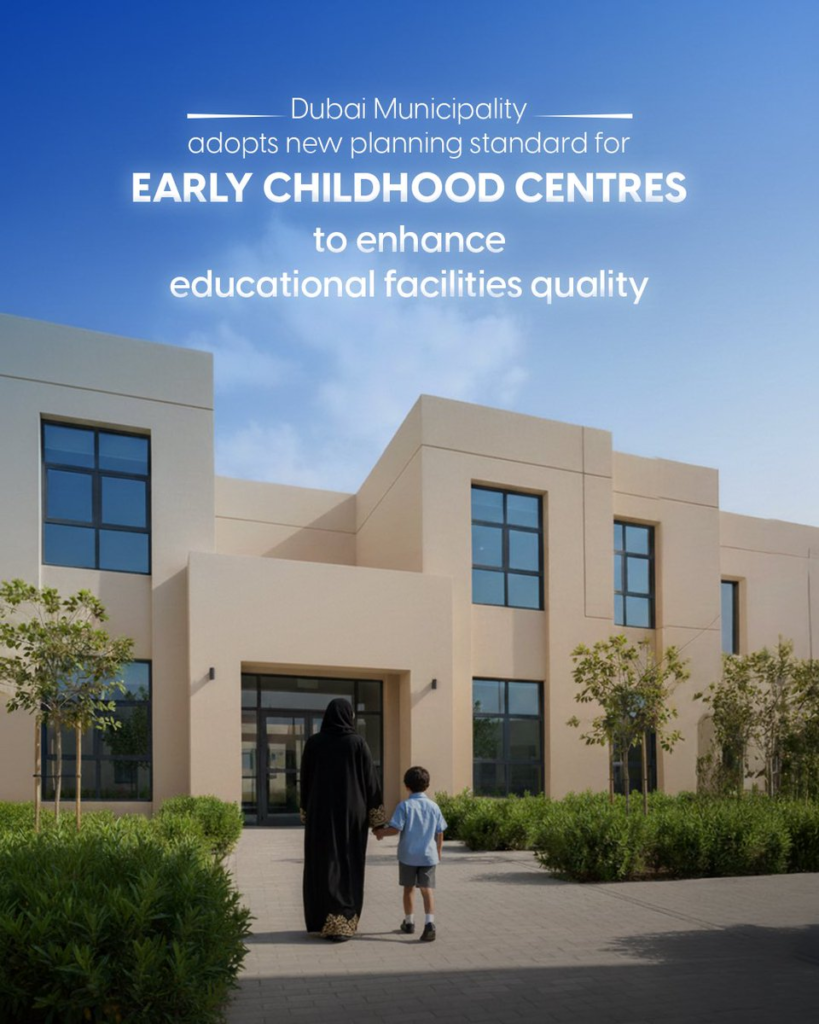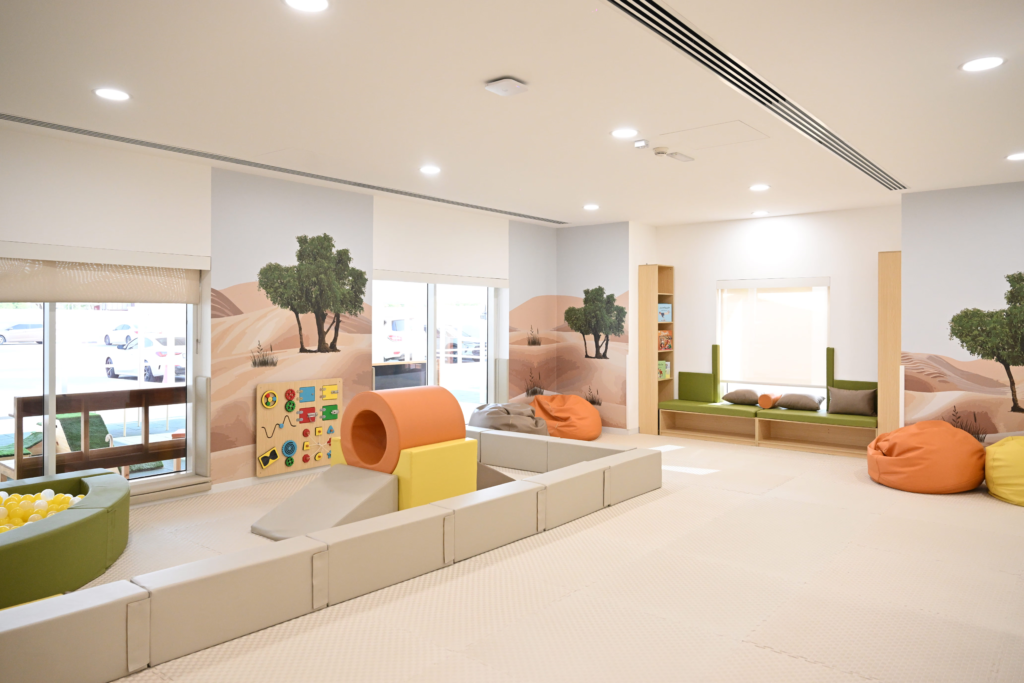Big news for Dubai’s education community. The Dubai Municipality has rolled out new planning rules for early childhood centres, setting a fresh direction for how nurseries and preschools are designed across the city.
These updates aren’t just about construction limits or technical specs — they’re about rethinking how the youngest learners experience their first educational spaces. With the city’s rapid growth and increasing demand for quality early-years education, this move aims to make centres more efficient, modern, and child-friendly.
What’s changing under the new standards

Under the revised regulations, early childhood centres can now build a first floor dedicated entirely to administrative and service purposes. This means the ground floor remains focused on classrooms and play zones, while the upper level can accommodate offices, staff rooms, and support facilities.
The building coverage ratio has also been increased to 45% of the total plot, giving developers more room to work with while maintaining safe, open spaces.
In addition, every centre must now maintain a minimum setback of three metres on all sides, ensuring better ventilation, light, and access around the property.
Parking and access have also received an update — one parking space is now required per classroom, one for every 50 square metres of administrative area, and one dedicated bus space for every three classrooms. These changes make life easier for both parents and operators, improving drop-off safety and traffic flow.
Built for families, aligned with Dubai’s future

This update isn’t happening in isolation. It’s part of Dubai’s broader Urban Master Plan 2040, which focuses on sustainable growth and liveable neighbourhoods. Education — especially early education — is a key pillar of that plan.
By giving nurseries and preschools more flexibility, Dubai is encouraging better design, higher capacity, and improved service quality. The new rules also support the goals of the Knowledge and Human Development Authority (KHDA), ensuring alignment between planning policies and educational outcomes.
For parents, this means more options. New centres can open in areas that previously faced space restrictions, and existing ones can upgrade to meet the new standards.
For operators, it’s an opportunity to innovate — from more dynamic classroom layouts to better outdoor play spaces and energy-efficient designs.
for nursery operators
Nursery owners and developers should review their current site plans. The expanded floor allowance opens up new possibilities for functionality without compromising the learning environment.
The additional first floor can be used for:
- Administrative offices or teacher lounges.
- Service areas and utility rooms.
- Multipurpose training or storage spaces.
These changes can significantly enhance operational efficiency. They also reduce pressure on ground-floor learning zones, making classrooms more spacious and interactive.
Developers can also benefit from improved land use efficiency, creating higher-quality projects that meet modern standards while remaining cost-effective.
A positive step for parents and the community
For parents, these updates promise tangible improvements. Future early childhood centres in Dubai will be designed with comfort, accessibility, and child safety in mind.
The updated setback and parking rules make pick-ups and drop-offs smoother, while the improved spatial standards mean better-ventilated, brighter, and safer environments for children.
As the city continues to expand, these planning upgrades ensure that Dubai’s education infrastructure keeps pace — blending innovation with thoughtful design.
A clearer look at the changes
| Feature | Previous Standard | New Standard |
|---|---|---|
| Floor usage | Usually ground-floor only | Ground + first-floor for admin/service use |
| Building coverage ratio | Varied, less flexible | Up to 45% allowed |
| Setback requirement | Varied | Minimum 3 metres on all sides |
| Parking & transport | Limited guidance | 1 parking/classroom, 1 per 50 m² office, 1 bus space/3 classrooms |
Part of Dubai’s larger education vision
Dubai’s focus on early childhood centres reflects its commitment to lifelong learning and family wellbeing. By integrating educational infrastructure into urban planning, the city is creating communities where families can live, work, and learn within easy reach.
The Municipality’s move also complements initiatives like the Dubai Social Agenda 33, which places strong emphasis on family welfare, youth development, and sustainable community planning.
It’s a sign that Dubai views education not just as a service — but as an essential part of everyday life and urban experience.
These updated planning standards are more than an administrative reform; they’re a foundation for a better early learning ecosystem in Dubai.
As new centres adopt these guidelines, families can expect more thoughtfully designed spaces, improved accessibility, and a stronger emphasis on quality.
For parents, it’s a small but meaningful reassurance that Dubai continues to invest in the future — starting right from the earliest years.
Read More:
- Nike’s New Running Lineup in the UAE: Here’s What You Need to Know About the Power of Choice – Social Kandura
- Sharjah International Book Fair 2025 Serves Up 35 Live Cooking Sessions – Social Kandura
Follow Social Kandura for more updates on local news and things to do in Dubai and across the UAE.











